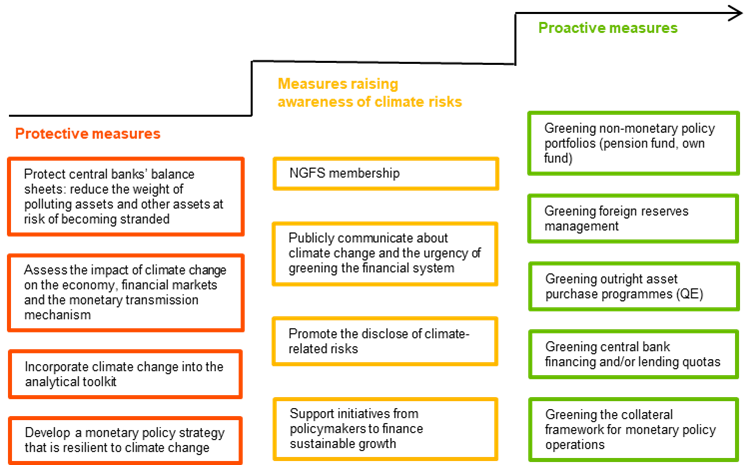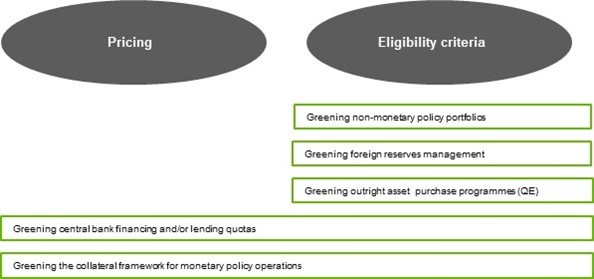References
BIS (2019), “Green bonds: the reserve management perspective”, Quarterly Review, September.
Boneva, L., Ferrucci, G. and Mongelli, F.P. (2021) “To be or not to be ‘green’: how can monetary policy react to climate change?”, ECB Occasional Paper Series, No 285.
ECB (2021) “Climate change and monetary policy in the euro area”, ECB Occasional Paper Series, No 271.
Dikau, S. and Volz, U. (2021), “Central bank mandates, sustainability objectives and the promotion of green finance”, Ecological Economics, Vol. 184.
Krogstrup S. and Oman, W. (2019), “Macroeconomic and financial policies for climate change mitigation: a review of the literature”, IMF Working Paper, No 19/185.
McKibbin W., Morris, A., Panton, A. and Wilcoxen, P. (2020), “Climate change and monetary policy: issues for policy design and modelling”, Oxford Review of Economic Policy, Vol. 36(3), pp. 579–603.
NGFS (2020), Climate change and monetary policy: initial takeaways, Technical Document, Network for Greening the Financial System, Paris, October.
NGFS (2021), Adapting central bank operations to a hotter world: reviewing some options, March.
Schoenmaker, D. (2021), “Greening monetary policy”, Climate Policy, Vol. 21, Issue 4, pp. 581-592.







